As the spring planting season nears completion, I travelled through south Wexford earlier this week to check on progress. Most of the land was planted but there was still some stubble and ploughed ground to be sown. Most of the spring cereals are now emerged and looking well.
While spring barley remains the major crop, winter oilseed rape was very visible in full flower and looking glorious in the sunshine. All the crops I visited were very clean, green to the ground and with no sign of disease. Crops seemed to have near perfect canopies with lots of branching.
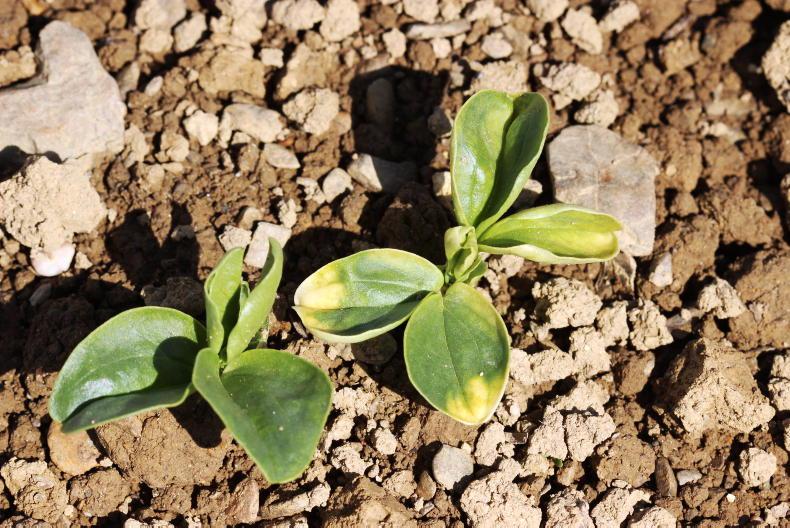
Yellow on young bean leaves may be a result of herbicide being washed down to shallow seeds.
Some were further through flowering than others. More advanced crops had over 20 pods formed beneath the extending flower head on the main raceme, while others only had five to 10 pods formed so far.
There were no signs of blank pod positions, which augurs well for yield potential, as do the big flower heads on all the branches.
Most barley is emerged
Spring barley crops in the area varied from recently sown to two leaves fully unfolded (GS12). However, most were at the one leaf unfolded stage. Most crops had been rolled and there was very little evidence of pest or crow damage. Most crops had no weeds of consequence yet, but a few crops had a lot already.
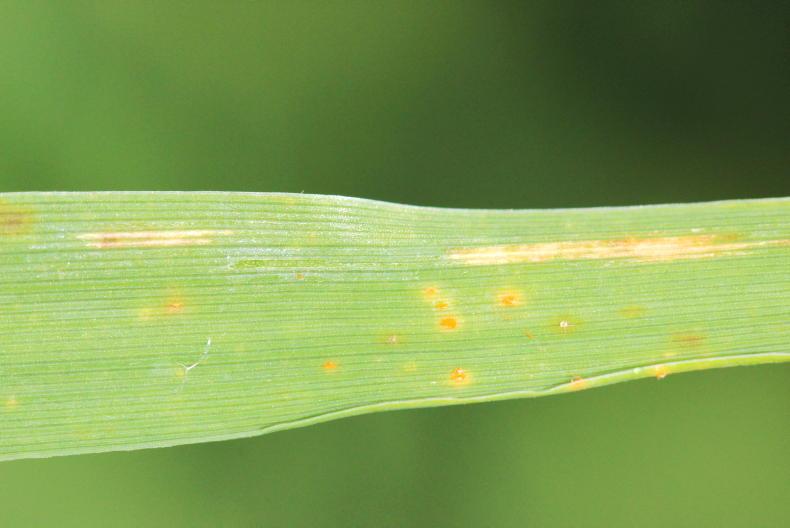
Pustules of brown rust on a winter barley leaf.
I saw some spring barley planted into ley ground and establishment looked excellent despite the visible clods. One field had patchy emergence though and the presence of crows indicated leather-jackets, which were causing a fair bit of patchy damage despite the crop having been rolled.
Crown rust in oats
The few oat crops I visited looked quite hungry and uneven with untypical small circles of taller, cleaner and more advanced plants. Areas of the crops varied from GS31 to GS37, which had the flag leaf visible, but they were closer to GS32 on average.
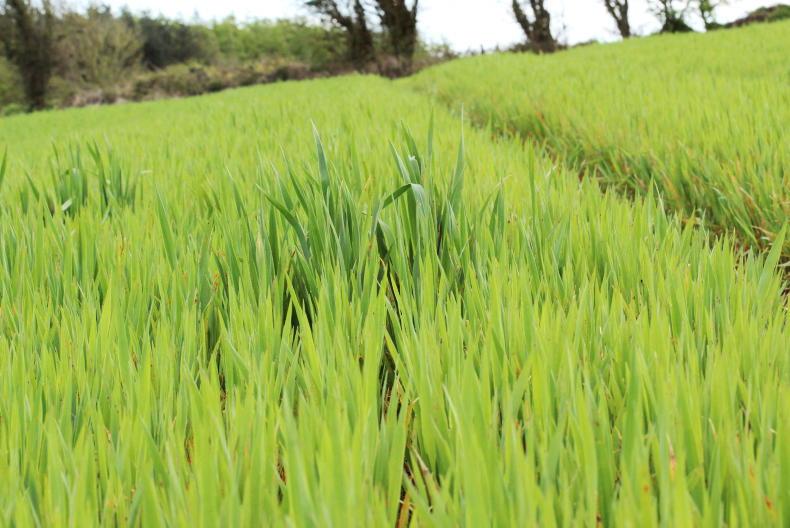
The occasional spot of more advanced and healthy plants in a hungry looking oat crop.
There was a lot of purple blotching on the more backward plants, which seems to be related to stress. There was also a lot of crown rust, which had been moving up recently, but there was less disease in total on the cleaner more advanced patches.
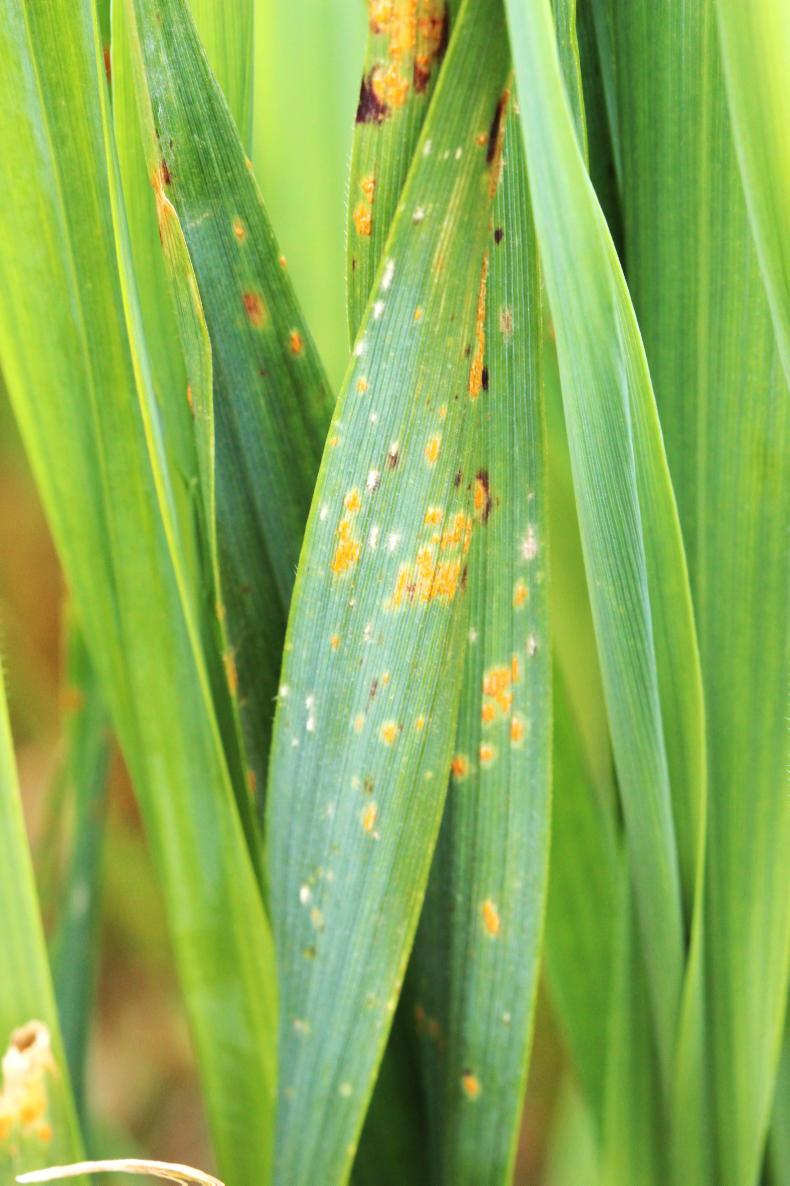
Crown rust and old mildew on winter oat leaves.
While there was no evidence of frost damage in these crops, there are now a good few reports of ears and stems having been killed by frost from the north to the south of the country.
The problem is not uniform nor in every field, but it is more associated with crops that were more advanced coming into spring. These stems are rotting and the leaves are partly but not yet fully dead. Only occasional stems have been affected.
Winter barley and BYDV
Winter barley crops were generally quite advanced, with flag leaves emerging or emerged on many crops. Patches of awns are visible in some crops.
One crop of six-row had a lot of BYDV showing in the field in small to big patches with visible stunting. Affected plants showed the typical yellow upper half on all leaves and aphids were feeding and multiplying.
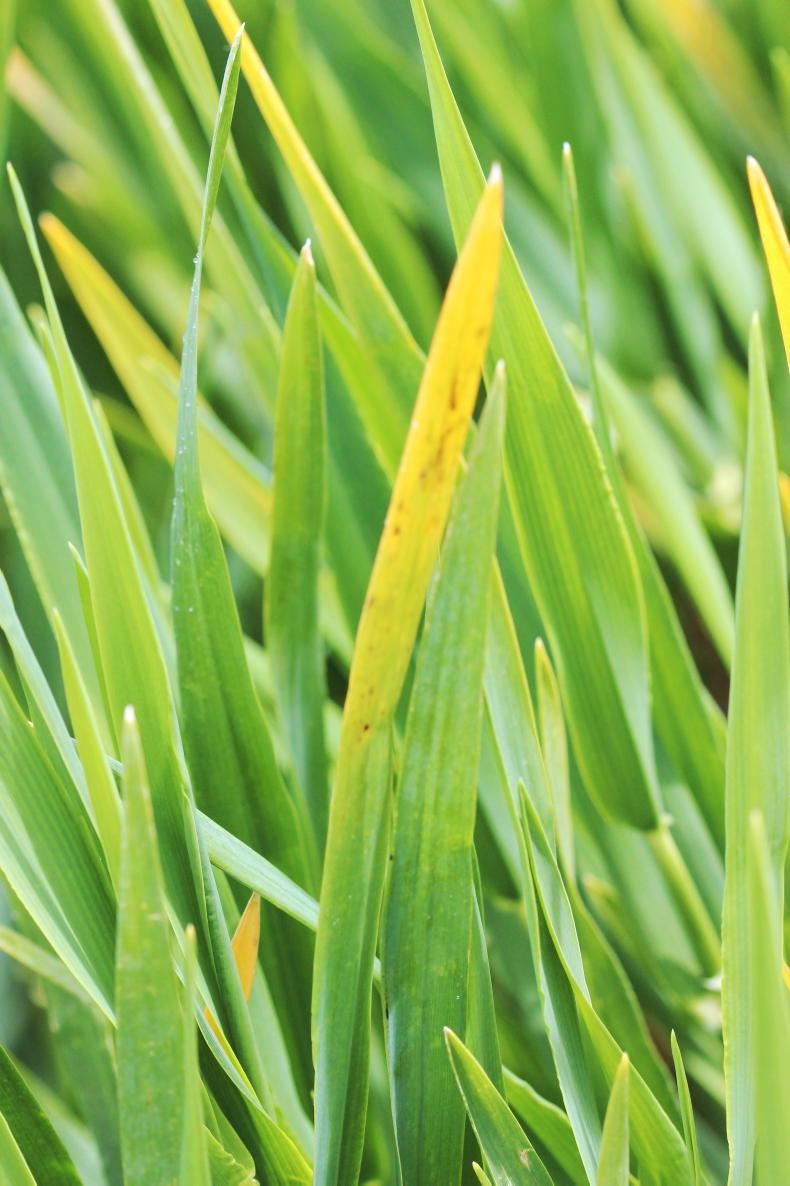
The typical BYDV symptoms.
This crop was very clean, but pustules of brown rust were evident, along with old mildew infection on some leaves.
Winter wheat at GS31
Winter wheat crops were generally around GS31, with some slightly more advanced. Crops were full and relatively clean, but one had a lot of leaf damage. This may be more related to previous spray damage and frost.
Some crops had only recently received herbicide and the weeds were still dying. Crops that were slightly more advanced had a greener colour.

The typical BYDV symptoms.
Emerging beans
There were a good few crops of spring beans around. A few crops were at the 4-6-leaf stage, but most were at the 2-leaf stage, with some plants still only emerging.
One crop had a lot of yellow discolouration on emerged leaves. This was most likely caused by herbicide as a lot of the seeds were less than 3cm deep.
Herbicide can be washed down onto the seeds during heavy rain to produce these symptoms. However, it is likely that these plants will recover fully in the next few weeks.
As the spring planting season nears completion, I travelled through south Wexford earlier this week to check on progress. Most of the land was planted but there was still some stubble and ploughed ground to be sown. Most of the spring cereals are now emerged and looking well.
While spring barley remains the major crop, winter oilseed rape was very visible in full flower and looking glorious in the sunshine. All the crops I visited were very clean, green to the ground and with no sign of disease. Crops seemed to have near perfect canopies with lots of branching.

Yellow on young bean leaves may be a result of herbicide being washed down to shallow seeds.
Some were further through flowering than others. More advanced crops had over 20 pods formed beneath the extending flower head on the main raceme, while others only had five to 10 pods formed so far.
There were no signs of blank pod positions, which augurs well for yield potential, as do the big flower heads on all the branches.
Most barley is emerged
Spring barley crops in the area varied from recently sown to two leaves fully unfolded (GS12). However, most were at the one leaf unfolded stage. Most crops had been rolled and there was very little evidence of pest or crow damage. Most crops had no weeds of consequence yet, but a few crops had a lot already.

Pustules of brown rust on a winter barley leaf.
I saw some spring barley planted into ley ground and establishment looked excellent despite the visible clods. One field had patchy emergence though and the presence of crows indicated leather-jackets, which were causing a fair bit of patchy damage despite the crop having been rolled.
Crown rust in oats
The few oat crops I visited looked quite hungry and uneven with untypical small circles of taller, cleaner and more advanced plants. Areas of the crops varied from GS31 to GS37, which had the flag leaf visible, but they were closer to GS32 on average.

The occasional spot of more advanced and healthy plants in a hungry looking oat crop.
There was a lot of purple blotching on the more backward plants, which seems to be related to stress. There was also a lot of crown rust, which had been moving up recently, but there was less disease in total on the cleaner more advanced patches.

Crown rust and old mildew on winter oat leaves.
While there was no evidence of frost damage in these crops, there are now a good few reports of ears and stems having been killed by frost from the north to the south of the country.
The problem is not uniform nor in every field, but it is more associated with crops that were more advanced coming into spring. These stems are rotting and the leaves are partly but not yet fully dead. Only occasional stems have been affected.
Winter barley and BYDV
Winter barley crops were generally quite advanced, with flag leaves emerging or emerged on many crops. Patches of awns are visible in some crops.
One crop of six-row had a lot of BYDV showing in the field in small to big patches with visible stunting. Affected plants showed the typical yellow upper half on all leaves and aphids were feeding and multiplying.

The typical BYDV symptoms.
This crop was very clean, but pustules of brown rust were evident, along with old mildew infection on some leaves.
Winter wheat at GS31
Winter wheat crops were generally around GS31, with some slightly more advanced. Crops were full and relatively clean, but one had a lot of leaf damage. This may be more related to previous spray damage and frost.
Some crops had only recently received herbicide and the weeds were still dying. Crops that were slightly more advanced had a greener colour.

The typical BYDV symptoms.
Emerging beans
There were a good few crops of spring beans around. A few crops were at the 4-6-leaf stage, but most were at the 2-leaf stage, with some plants still only emerging.
One crop had a lot of yellow discolouration on emerged leaves. This was most likely caused by herbicide as a lot of the seeds were less than 3cm deep.
Herbicide can be washed down onto the seeds during heavy rain to produce these symptoms. However, it is likely that these plants will recover fully in the next few weeks.












 This is a subscriber-only article
This is a subscriber-only article










SHARING OPTIONS: